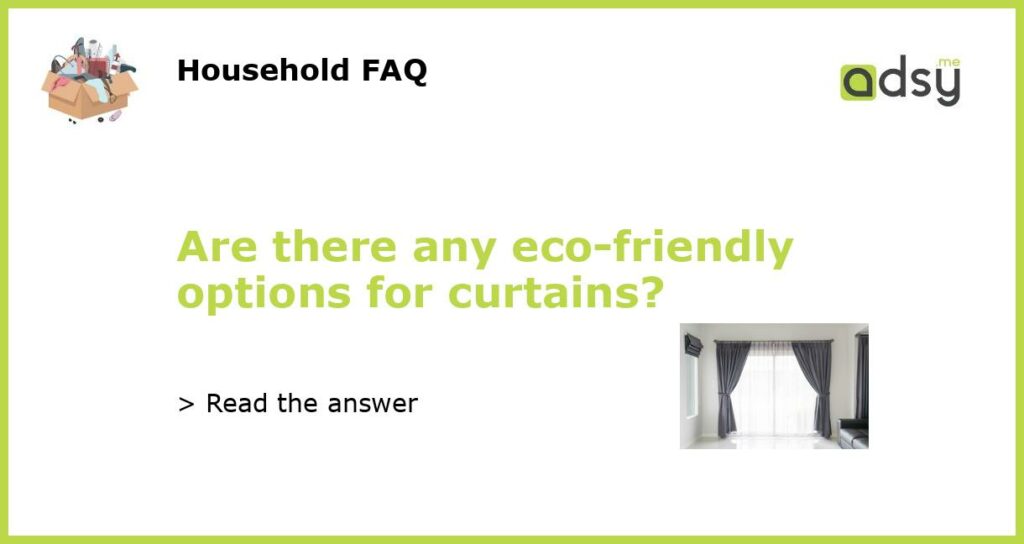What are eco-friendly curtains?
Eco-friendly curtains are made from sustainable materials that are environmentally friendly. These curtains are designed to reduce the negative impact on the environment by using materials that are biodegradable, recyclable or made from natural resources. They are often manufactured using processes that minimize energy use and waste production.
What are some materials used in eco-friendly curtains?
Some of the most popular materials used in eco-friendly curtains include organic cotton, linen, bamboo, and hemp. These materials are grown without the use of harmful pesticides and fertilizers, making them safer for both the environment and the people who work with them.
How are eco-friendly curtains manufactured?
Eco-friendly curtains are manufactured using processes that minimize energy consumption and waste production. For example, some manufacturers use solar-powered factories to produce their curtains, while others recycle water and use environmentally-friendly dyes in their manufacturing process. Additionally, some companies reduce packaging waste by using eco-friendly packaging materials.
Where can I purchase eco-friendly curtains?
You can purchase eco-friendly curtains from a variety of retailers, both online and in brick-and-mortar stores. Some popular options include organizations that specialize in sustainable home goods, as well as retailers that offer eco-friendly product lines, such as West Elm and IKEA.
What are the benefits of using eco-friendly curtains?
One of the biggest benefits of using eco-friendly curtains is that they are better for the environment. By using sustainable materials and manufacturing processes, these curtains help reduce the negative impact that traditional manufacturing methods can have on the planet. Additionally, eco-friendly curtains can be healthier for you and your family, as they are less likely to contain harmful chemicals or toxins.






